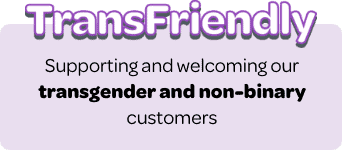
Mindfulness, which includes mindful meditation, is a term that gets thrown around quite a bit these days and you may be wondering, what does it mean to do something mindfully… or you may be wondering what the heck is mindfulness anyways?
The American Psychological Association (2019) has this to say about it, “…a simple way to think of it is training your attention to achieve a mental state of calm concentration and positive emotions.” This definition leaves quite a bit of room to adapt this practice to many situations, but it also leaves a lot of questions too. You may be wondering, where does mindfulness come from? Why does it matter? And how do you actually do mindfulness?
Where does it come from?
Mindful meditation, and other mindfulness-based practices, have their roots in Indian philosophies and religions. The religions of Hinduism, Buddhism, and Jainism all have rich histories with mindfulness practices and texts discussing these practices dating back thousands of years. These ancient practices began making their way into therapy offices in the late 70s when Jon Kabat-Zinn, working out of the University of Massachusetts, introduced the Mindfulness-Based Stress reduction Program (Singh, 2023). Since then, the use of mindfulness-based practices has grown considerably within the mental health fields.
Why does it matter?
When it comes to day-to-day life, queer/gay/LGBTQ+ folks tend to experience a higher level of stress than their straight, cis counterparts. This can be due to several reasons such as discrimination, housing instability, hate speech, bigotry, or simply the daily exposure to a society that stigmatizes being different. It is difficult to turn on the news or scroll your news feed and not be inundated with news about tragic things happening to queer folks or laws being discussed to limit our rights. In short, it can be difficult out there in the world right now, and this can lead to stress.
While stress is something everyone experiences, there is a specific type of stress that the queer/gay/LGBTQ+ communities experience known as minority stress. This specific type of stress can look different than daily stress due to the fact that minority stress is often linked to systemic pressures and/or biases. Additionally, for queer/gay/LGBTQ+ individuals who also hold other marginalized identities they may experience a compounding impact from minority stress (Iacono, 2018). These experiences may often leave people feeling disempowered, disenfranchised, or despondent when confronting the realities of navigating oppressive systems.
It is precisely because of these added stressors that folks in the queer/gay/LGBTQ+ community face that makes mindfulness such a valuable tool. When feeling disempowered mindfulness offers individuals an avenue to exert some control over a situation. However small that control may seem, using mindfulness to regulate your body when in an overwhelming situation can have far-reaching and profound impacts. Mindfulness can make the difference between feeling completely overwhelmed and having a manageable level of stress.
How to do it?
A lot of people have the assumption that unless your mind is empty, that you are doing mindfulness wrong. This is not the case; there is no right or wrong way to be mindfully present. Oftentimes, mindfulness, especially mindful meditations, are filled with anxiety and racing thoughts. As much as you can try to simply observe these thoughts and feelings rather than trying to stop them or change them.
3 Mindfulness practices you can do at home!
- Mindful meditation: Find a place that you can sit comfortably. You don’t have to sit in any special way; you just want to feel comfortable. It tends to work best if you put your feet flat on the floor, lay your hands in your lap, and close close your eyes. If you don’t feel comfortable sitting with your eyes closed, simply look down at your hands. You start by allowing your awareness to move into your body by focusing your attention on your feet, then your legs, then stomach and lower back, moving all the way through your body to the top of your head. Begin taking deeper and deeper breaths, breathing in through your nose and breathing out through your mouth. If you notice yourself having any thoughts, just try to observe them like you are standing on the side of a river watching your thoughts float by you. That’s pretty much it! Once you got your breathing rhythm down, you can count your breaths or repeat an encouraging phrase if you need to focus on something but you also don’t need to do that either.
- Mindful walking: This one is quite similar to mindful meditation, though it is not advisable to try mindful walking with your eyes closed! Mindful walking is exactly what it sounds like, walking while engaging mindfully, though this is not the same as taking a stroll. To practice mindful walking, you only need to pick a place to walk to and start walking there. You don’t need to walk anyway in particular but take a noticeably slower pace than usual; it is important to note that this isn’t power walking! While walking, try to fix your gaze forward, focusing on what’s ahead of you, and take long, slow breaths. Notice how your body feels as you walk, paying attention to each footfall. If you get tired or start feeling pain, simply stop walking, sit down, and keep being mindful. Mindful walking works best when you have a route that you often walk, and you know well. But you can use it anytime that you are out and about in the world.
- Curious self-compassion: It is not always easy to be nice to yourself, which is doubly true when you are living in a world where bigotry is commonplace. Often when people have experienced minority stress and/or trauma, self-compassion can be a difficult thing to ask for. But curious self-compassion is different than simply being nice to yourself. Curious self-compassion is about identifying the moments when you are struggling the most and then asking yourself “how can I be compassionate to myself in this moment?” There are two important caveats to this practice. The first is that you don’t have to be able to answer this question, and that’s okay. The point of this exercise is not necessarily about answering the question, it is about developing the practice of focusing on self-compassion and envisioning what that may look like. The second caveat is that even if you do come up with an answer to “how can I be compassionate to myself” you don’t actually have to do anything. If you can, that’s great but you are not obligated to do anything. Again, the point is about imagining what self-compassion can look like.
What you can expect
Rarely does mindfulness fix your problems, but that is also not the point. Additionally, mindfulness is not always about feeling good; it’s more about feeling and understanding a moment, even the unpleasant ones. It is better to think of mindfulness as a tool that can give your brain the space to keep thinking when it may be difficult to do so. If your body is like a car, mindfulness is a spare tire in the trunk; you can’t drive on a spare forever, but it can get you through a rough spot or even save your life!
_____________________________________
This blog is authored by Dr. Be G. Carter, PsyD. IntraSpectrum Counseling is Chicago’s leading psychotherapy practice dedicated to the LGBTQ+ community, and we strive to provide the highest quality mental health care for multicultural, identity, kink, polyamorous, and intersectional issues. For anyone needing affirming and validating support, please click here or contact us at help@intraspectrum-chicago.com.





 Today, July 26th, is National Disability Independence Day. This annual commemoration marks the day in 1990 when the Americans with Disabilities Act (ADA) was signed into law. The ADA enshrined several crucial civil rights protections for individuals with disabilities, but it still falls short of its intended goals after over 30 years on the books.
Today, July 26th, is National Disability Independence Day. This annual commemoration marks the day in 1990 when the Americans with Disabilities Act (ADA) was signed into law. The ADA enshrined several crucial civil rights protections for individuals with disabilities, but it still falls short of its intended goals after over 30 years on the books.